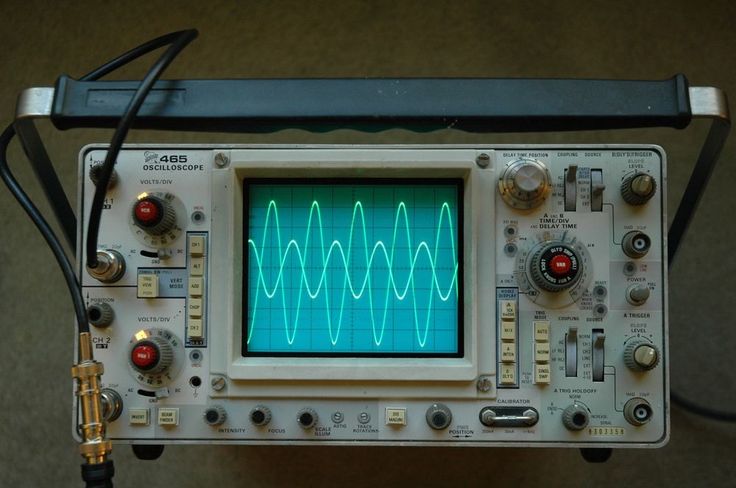An oscilloscope is an essential electronic instrument used to observe and analyze the varying signal voltages in electrical circuits. Whether you’re an electronics enthusiast, an engineer, or a technician, the oscilloscope is a tool you will often rely on to troubleshoot and optimize your designs. This article delves into what an oscilloscope is, how it works, and why it remains crucial in modern electronics.
What is an Oscilloscope?
An oscilloscope is a device that graphically displays electrical signals. It plots voltage over time on a two-dimensional graph, where the X-axis represents time and the Y-axis represents voltage. This visual representation helps users understand how signals behave in real-time, detect anomalies, and verify circuit designs.
Oscilloscopes come in various types, such as analog and digital. While analog oscilloscopes were common in the past, most modern models are digital storage oscilloscopes (DSOs), offering advanced features like signal storage, automatic measurements, and digital filtering.
How Does an Oscilloscope Work?
The basic function of an oscilloscope is to take an input voltage and convert it into a visual waveform. This waveform can tell you a lot about the electrical signal, including its frequency, amplitude, rise time, and noise. Here’s a simplified overview of the working process:
- Signal Input: The oscilloscope receives a voltage signal through a probe connected to the circuit under test.
- Signal Conditioning: The signal is then amplified or attenuated, and filtered to prepare it for digitization.
- Analog-to-Digital Conversion (ADC): In digital oscilloscopes, the signal is converted into digital data using an ADC.
- Waveform Display: The digital data is processed and plotted as a waveform on the oscilloscope screen.
Key Features of an Oscilloscope
When selecting an oscilloscope, there are several important specifications and features to consider:
- Bandwidth: This determines the range of frequencies the oscilloscope can accurately measure. Higher bandwidth allows for the observation of faster signals.
- Sample Rate: Measured in samples per second (S/s), the sample rate affects the oscilloscope’s ability to capture high-frequency events accurately.
- Channels: Most oscilloscopes offer two or more channels, allowing multiple signals to be compared simultaneously.
- Memory Depth: This defines how much data the oscilloscope can store. Greater memory depth allows for longer signal capture times.
- Triggering Capabilities: Advanced triggering lets users capture specific signal conditions, such as a rising edge or a particular pulse width.
Applications of Oscilloscopes
Oscilloscopes are used in a wide range of industries and applications:
- Electronics Design and Debugging: Engineers use oscilloscopes to verify circuit performance, troubleshoot issues, and ensure signal integrity.
- Education and Training: In academic settings, oscilloscopes are indispensable for teaching electronics and signal analysis.
- Automotive Diagnostics: Oscilloscopes help diagnose issues in vehicle electronics and sensors.
- Medical Equipment: In the medical field, oscilloscopes are used to monitor electrical signals in medical devices like ECG machines.
- Telecommunications: Oscilloscopes assist in the testing and maintenance of communication equipment.
Tips for Using an Oscilloscope
To get the most out of your oscilloscope, keep these tips in mind:
- Use Proper Probes: Match the probe’s bandwidth and impedance with the oscilloscope and the circuit.
- Set the Right Time Base and Voltage Scale: Adjust these settings to clearly view the waveform without clipping or distortion.
- Use Triggering Effectively: Set appropriate trigger levels and types to stabilize and analyze repetitive waveforms.
- Calibrate Regularly: Periodic calibration ensures measurement accuracy and reliability.
Choosing the Right Oscilloscope
Choosing the right oscilloscope depends on your application and budget. For hobbyists and students, entry-level DSOs are affordable and sufficient for basic tasks. Professionals working in high-speed digital or RF applications may require high-end models with multi-gigahertz bandwidth and advanced analysis features.
Brands like Tektronix, Keysight, Rigol, and Siglent offer a wide range of oscilloscopes suited for various needs. When purchasing, consider the future expandability, software compatibility, and available support.
Conclusion
The oscilloscope is a powerful and indispensable tool in the world of electronics. Its ability to visually display and analyze electrical signals makes it invaluable for design, testing, and troubleshooting. Whether you’re exploring simple waveforms or complex, high-frequency signals, mastering the oscilloscope is essential for anyone working with electronics.
As technology continues to evolve, the oscilloscope also advances with better resolution, faster speeds, and smarter features—solidifying its place as a cornerstone of electronic diagnostics and analysis.

